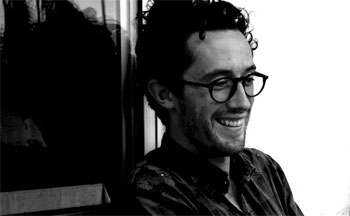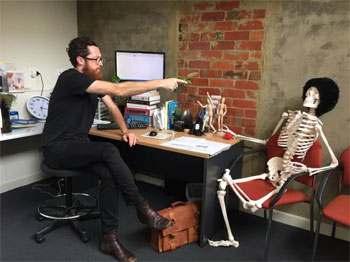Bill Adamson Osteopathy Australia Interview

Osteopathy is a Form of Manual Healthcare
Osteopathy is now the fastest-growing health regulated health profession in Australia. With a workforce increase of over 6.5% last year alone, Osteopathy is now taking the allied healthcare profession to the next level, competing with the larger streams of allied healthcare, being Chiropractic & Physiotherapy.
To give a brief background on what Osteopathy is, Osteopathy is a form of manual healthcare which recognises the important link between the structure of the body and the way it functions. Osteopaths focus on how the skeleton, joints, muscles, circulation, connective tissue and internal organs function as a holistic unit. In Australia, Osteopaths are primary healthcare practitioners that requires a minimum of 5 years accredited university training. In Australia, there are three universities that offer Osteopathy: RMIT, Victoria University and Southern Cross University.
 Interview with Bill Adamson, Osteopath
Interview with Bill Adamson, Osteopath
Question: Why did you decide to study Osteopathy?
Bill Adamson: I'm an osteopath that works in a medical practice. My patient base is variety of ballet dancers, footballers, headache sufferers, MAMIL's (Middle Aged Men in Lycra), chronic pain endurers, as well as the standard back and neck pains.
In my spare time, I lecture the therapeutic use of communication at RMIT, clinical excellence at VU and sit on the board of Osteopathy Australia.
Question: Can you define in your own words, what as Osteopath is/does and what differentiates them from a Physiotherapist/Chiropractor?
Bill Adamson: An osteopath assesses (via communication and movement) why someone is in the state they are in. They form a diagnosis based on the assessment. They explain what the diagnosis means. They discuss the potential options that can be taken by the patient. And they treat using a mix of hands on techniques and exercise prescription.
For example: If someone walks through the door with a sore left low back that came on after developing right legged limp 3 months earlier, the osteopath will try to determine the causes of the limp.
The osteopath may explain that they can rub the sore low back till they are red in the face but that longer-term patient will need to work on the thing that is causing the limp.
If the patient says that they are limping because of a play they are in, then the osteopath may offer some exercises to mitigate the situation as well as some hands-on care.
Not being a physiotherapist or a chiropractor, it's hard to say how that differs.
 Question: What was your greatest achievement in 2017?
Question: What was your greatest achievement in 2017? Bill Adamson: I snapped my Achilles tendon in an age-related football incident in August 2017. That week my partner moved in, I started a new business and I began lecturing a new subject (and writing the material for it).
My greatest achievement this year has been not just surviving that period but coming out the other side with happy students, a business that isn't sinking and a partner that is still talking to me, although she isn't happy at the state of my once beautiful garden...
Question: What are your five New Year's Resolutions for 2018?
Bill Adamson: Grow and expand the new business, consolidate the existing business.
Work on some more creative pursuits that have dropped off this year; writing, social media, local paper and a show.
Continue to strengthen my Achilles with the goal of running 5km by February next year.
Continue to learn about governance, business structure and apply that to my role(s) at Osteopathy Australia
Be a better gardener…!
Question: Where do you see Osteopathy in 2018?
Bill Adamson: In a remarkably similar position to 2017, just with 300 more Osteopaths! Last year alone, Osteopathy has now become the fastest-growing regulated health profession in Australia. 2018 is going to an even bigger year…
Question: What is your advice for anyone who wants to seek treatment with an Osteopath?
Bill Adamson: Osteopathy Australia is a great for anyone who wants to seek treatment with an Osteopath. I recommend checking out www.osteopathy.org.au and clicking 'Find Your Local Osteopath'. Remember to do your research and try and find the best Osteopath to suit your injury.
MORE


